
The Pros
- Cellular connectivity is useful in specific situations
- Watch is snappy and fast thanks to S3 processor
- watchOS 4 adds great new features
The Cons
- Price is on the high-end of the smartwatch market
- Cellular connectivity is only available with Bell
- Cellular only does not get all-day battery life
Since launch, I’ve always liked the Apple Watch a lot.
I’d even go so far as to say I’m a big fan of smartwatches in general, including Google’s Android Wear platform — especially since the tech giant’s recent 2.0 update.
“Despite what some may have initially thought, myself included, the cellular Apple Watch Series 3 is not a complete replacement for the iPhone.”
That’s because I use smartwatches in a very specific way: for notification triage.
Given that I work in media, I’m often responding to a deluge of email and messages at all hours of the day. For the last three years, the Apple Watch has allowed me to put away my phone when I get home and prioritize only the messages that matter, giving me a much-needed reprieve from my busy job and letting me disconnect from the world, even if only slightly. This is something I value greatly.

That’s how I utilize the Apple Watch, but other people likely use Apple’s wearable in a completely different way. I know people who use the Apple Watch as their core fitness tracking device, as well as those who actually use the platform’s various apps — which launch much quicker now with the Series 3 watch and watchOS 4.
To some extent, the Apple Watch Series 3 is for users who fall into the latter category; those that enjoy using their Apple Watch as an iPhone companion.
Despite what some may have initially thought, myself included, the cellular Apple Watch Series 3 is not a complete replacement for the iPhone, though it is slightly more independent depending on what you’re doing with the wearable.
In fact, it’s still very much tethered to Apple’s smartphone, only in a different way. To some who perhaps feel the Apple Watch should have been a completely independent device when it launched roughly three years ago, this may be a disappointment.
However, those who are already sold on the what the Apple Watch is capable of, will find a lot to like about the series 3.
Specs
Size: 42MM, 38MM
Series 3 (GPS + Cellular) requires an iPhone 6/iOS 11 (or later)
Network technology: GSM / HSPA / LTE
Body dimensions: 42.5mm x 36.4mm x 11.4mm (1.67 x 1.43 x 0.45 in)
Weight: 52.8g
Build: Stainless Steel/Ceramic back
SIM: Embedded SIM card (Apple e-SIM)
50m waterproof
Display: AMOLED capacitive touchscreen, 16M colors
Size: 1.65 inches (~55.4% screen-to-body ratio)
Resolution: 390 x 312 pixels (303 ppi pixel density)
Multitouch Yes
Operating System: watchOS 4.0
Chipset: Apple S3
CPU: Dual-core
GPU: PowerVR
Internal: 16 GB, 768 MB RAM
Wi-Fi 802.11 b/g/n
Bluetooth 4.2, A2DP, LE
GPS Yes, with A-GPS, GLONASS
NFC Yes
Sensor: Accelerometer, gyro, heart rate, barometer
Apple Watch Series 3 cellular limitations

During my extensive testing of the Apple Watch Series 3’s cellular capabilities, I uncovered a few interesting caveats regarding what the wearable is actually capable of doing.
For instance, if the iPhone is off or its battery has died, only iMessage and phone calls can be received or sent via the Series 3. So if the person you’re trying to contact is an Android user and you’re attempting to reach them through standard text messages, you’re out of luck unless you call them. Furthermore, voicemail won’t work and Mail can’t connect when the smartphone the Series 3 is tethered to is turned off.
In order to receive notifications, the iPhone the Apple Watch is connected to must be powered on and connected to the internet in some way, as the phone acts as a conduit for all content sent to the Series 3.

During my time with the new Apple Watch, I left an iPhone 8 set up with the Series 3 at home and headed out grocery shopping. I received texts, Facebook messages, Gmail notifications and when I had my Gmail account setup through Apple’s Mail app, the ability to respond to emails.
Call quality was impressive even with spotty mic proximity, though taking calls with the Apple Watch is less than ideal, especially in public — you’ll get some strange looks. I did, however, run into a few issues where I lost cellular signal completely, though this only happened once and the disconnection lasted roughly 10 minutes.
Also, the Series 3 will not work when outside of Canada, so roaming is not an option.
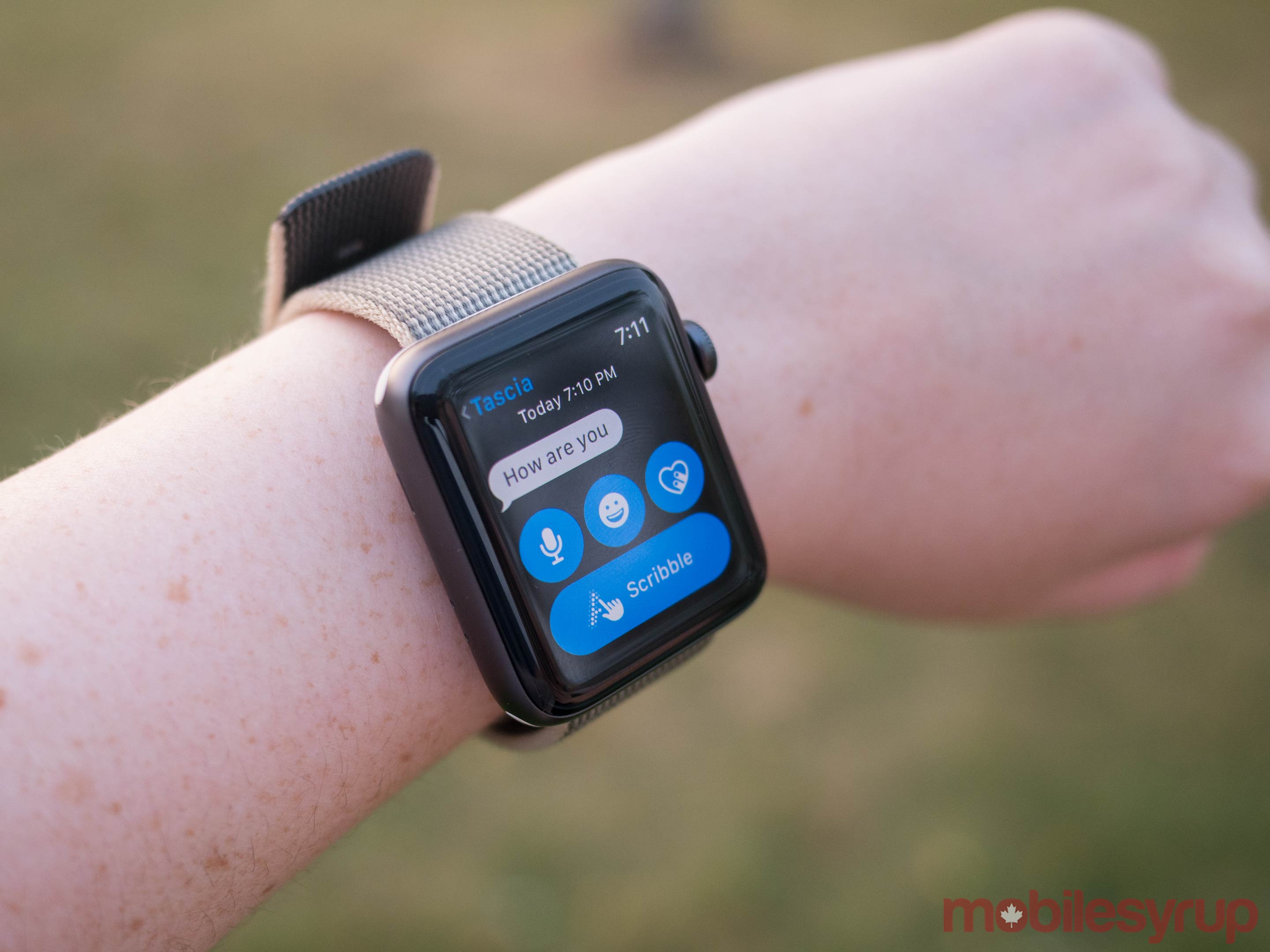
The Series 3 isn’t designed to be only used on cellular either. In Apple’s mind, users will still use the watch as they always have, with the wearable tethered to an iPhone. However, because of the freedom cellular provides, they’ll now be able to venture off without their smartphone for brief periods of time.
This is also how Apple gets by with stating that the Series 3 still features “all-day battery life” despite its cellular connectivity. Surprisingly, this claim is accurate, as long as you don’t solely use the watch on cellular. That said, even when using the device only on cellular, I was able to squeeze out battery life that lasted from early in the morning until late in the evening. This length of battery life from such a tiny device with a cellular connection is an impressive feat on Apple’s part.
Cellular setup and use case

Now that the series 3’s limitations as an independent device are out of the way, let’s take a look at the setup process and how the Series 3 fits in the Canadian cellular market.
At least at launch, the Apple Watch Series 3 LTE is available exclusively through Bell, though Telus says that it will eventually support the wearable as well. Telus specifically told MobileSyrup that it “looks forward to launching the Apple Watch 3 as soon as the system’s technology is in place; it’s part of our commitment to putting customers first.”
“At least at launch, the Apple Watch Series 3 LTE is available exclusively through Bell.”
It’s unclear whether Bell flanker brand Virgin Mobile will also sell the Watch, but Telus’ Koodo has already confirmed it will not stock the wearable.
As it stands right now, Rogers and its sub-brand Fido, as well as regional carriers like Vidéotron and Sasktel, do not currently support the Apple Watch Series 3’s marquee feature, LTE connectivity.

The setup process is simple enough with Bell. Users need only navigate to the Apple Watch’s iPhone app and set up the carrier’s ‘NumberShare’ $5 add-on through various in-app displays. It’s also worth noting that NumberShare also requires a $10 activation fee with Bell, though the first three months of the plan are free through a limited-time promotion.
While $5 a month may seem like a small amount of money to share a phone number with a wearable, to others, this may seem like an astronomical and unnecessary price tag.
When it comes to the Series 3, I could probably live without cellular connectivity since my iPhone is almost always with me. In the few instances where I may not have Apple’s smartphone, though — for example when sailing my sailboat in the middle of Georgian Bay or when I’m playing hockey — I could see the Series 3’s ability to take phone calls becoming very useful.
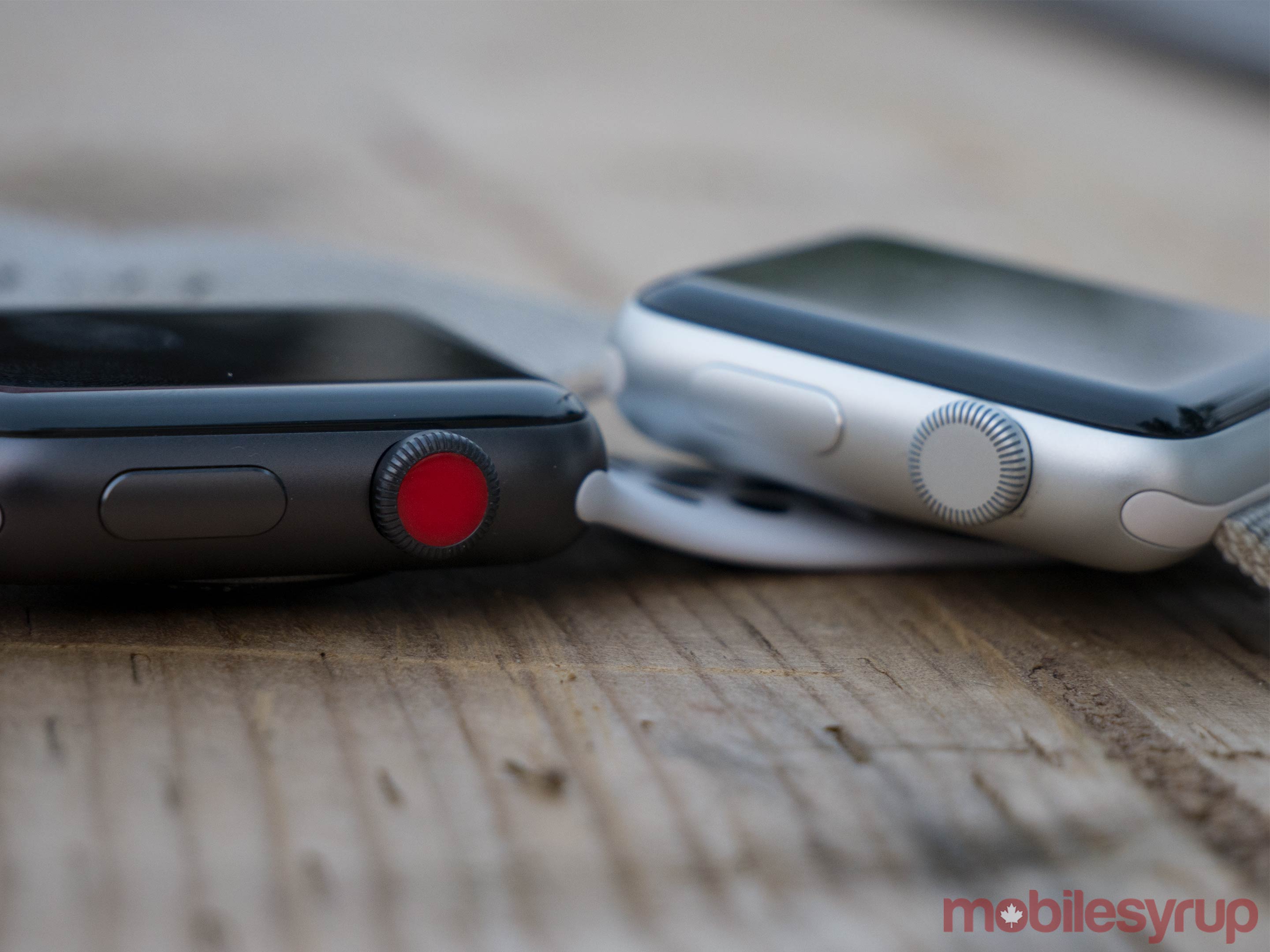
Paying an additional $5 on top of my already expensive monthly plan for those few instances where cellular would come in handy, however, isn’t worth it for me.
Those who use the Apple Watch Series 3 for fitness purposes will likely really enjoy the Series 3’s cellular connectivity feature since it will allows them to leave their smartphone at home when on a run, or when exercising in some other way, and still stay connected.
How much value you’ll get out of cellular connectivity with the latest version of the Apple Watch really depends on how you intend to use the wearable.
What else is new?

Along with cellular connectivity, the Series 3 LTE, as well as the Series 3, have received a number of hardware upgrades. It’s important to point out that aesthetically the watch looks almost exactly the same as the Series 1 Apple Watch, though the LTE edition does feature a red digital crown, a move I found gives the watch a dose of visual flair. Size wise, the Series 3 is also slightly larger than the Series 2, but only by a few millimetres.
The watch’s S3 dual-core processor is now 70 percent faster than the silicon featured in the Series 2, according to Apple. In my experience, Apple’s claims seem accurate regarding the Series 3’s power.
“The watch’s S3 dual-core processor is now 70 percent faster than the silicon featured in the Series 2.”
Launching apps, navigating the watch’s menu and just doing simple tasks like switching watch faces, feel faster and more responsive than they did with the Series 2, though this could also be due to watchOS 4’s various stability improvements to the watch’s operating system (more on that later).
Other new hardware features include a barometric altimeter, allowing those that use the Apple Watch for fitness to track their elevation, as well as a new and improved W2 wireless chip. Siri, a feature I have rarely touched with the Apple Watch Series 1 or 2, also now speaks on the Apple Watch and utilizes the Series 3’s speaker. For those of us who want to avoid talking to an AI assistant in public, it’s also possible to speak to Siri via AirPods.

In general, the fact that Apple has opted to once again stick with the same design for the Apple Watch Series 3 is disappointing. It’s not that the Apple Watch is a drab looking wearable. In fact, it’s still one of the best-looking smartwatches on the market in my opinion, with perhaps only the now discontinued Moto 360 2nd Gen surpassing it slightly. I was just hoping that three years into this product category, Apple would opt for a visual revamp.
That said, the fact that the Cupertino-based tech giant was able to cram cellular technology, including an antenna that’s built directly into the Apple Watch’s display, is an impressive industrial design achievement.
watchOS 4
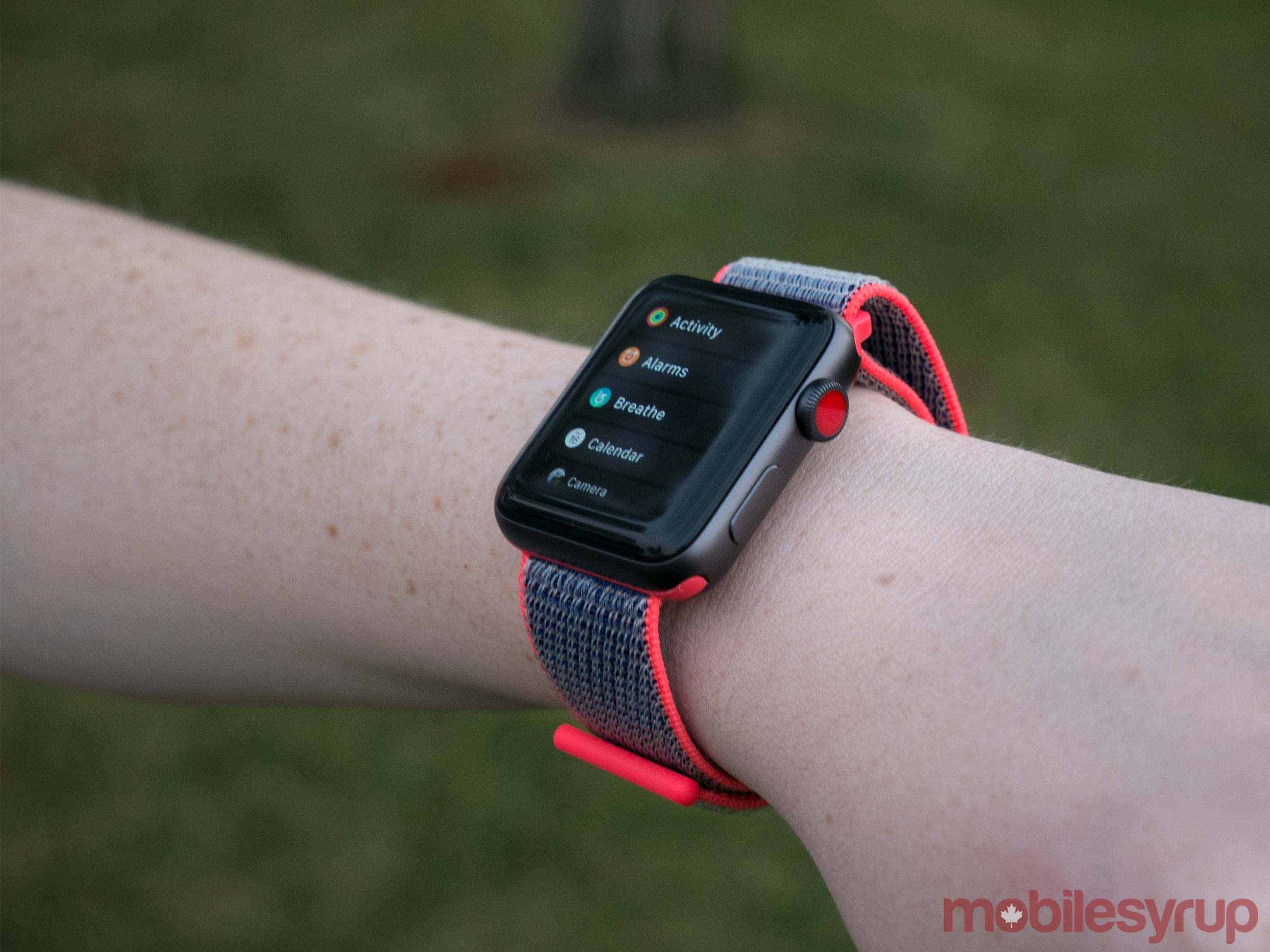
Beyond cellular and hardware improvements, the real star of the Apple Watch Series 3 is watchOS 4, the new version of Apple’s smartwatch operating system that’s also coming to the Series 1 and Series 2.
Similar to watchOS 3, which was a fitness-focused rethink of the wearable OS, watchOS4 brings with it a host of new features, including a new Siri watch face that dynamically updates over the course of the day by learning your routine in relation to Calendar, Reminders, Activity and Wallet app activity. Siri is also accessible through this watch face with just one tap.
While this watch face feels like a less capable version of Google Now in some situations, it’s also a welcome addition to the smartwatch line and a page right out of Android Wear.
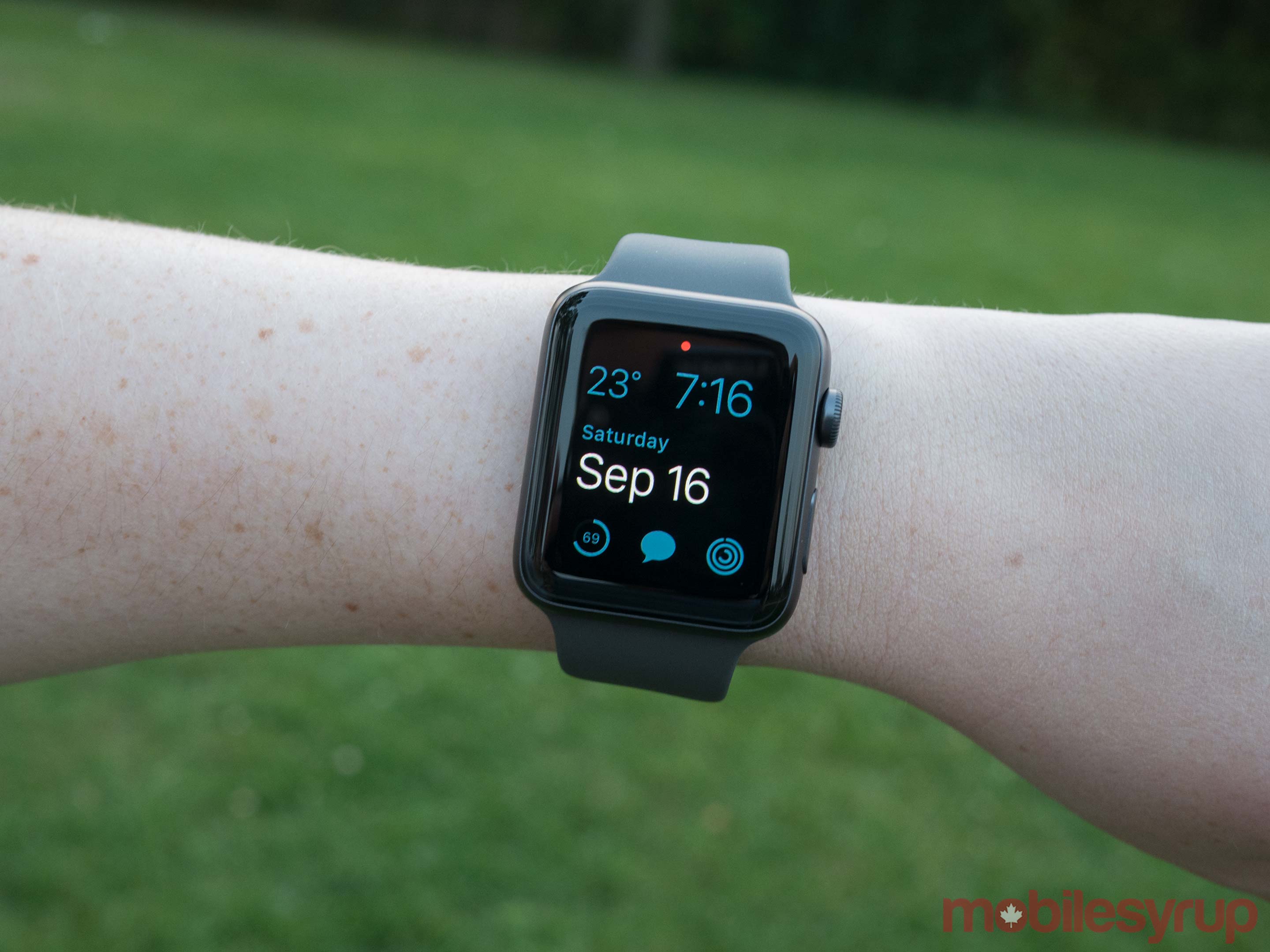
There’s also a new kaleidoscope watch face and of course, Toy Story watch faces that bring Woody, Jessie and Buzz Lightyear to users’ wrists. I’m not particularly fond of the idea of walking around with Buzz Lightyear on my arm, but I did get a kick out of the Toy Story watch face’s various animations.
Activity coaching has also been updated with new features, likely in an effort to take on Fitbit’s upcoming Ionic smartwatch. For example, the Activity app now sends out progress updates based on personal activity levels and features monthly challenges. Perhaps most useful for someone like myself, who is only casually interested in the Apple Watch’s fitness features, is the new feature that tells users exactly how long they need to walk to close their rings.
“The idea behind pointing out irregularities in your heartbeat is that they could indicate a larger medical issue.”
watchOS 4’s updates to the Apple Watch’s heart tracking functionality are perhaps the most noteworthy. Any Apple Watch equipped with heart rate sensors is now capable of recording your resting heart rate, your recovery heart rate, your average walking heart rate and any spikes in heart rate that occur could occur when you’re not exercising. The idea behind pointing out irregularities in your heartbeat is that they could indicate a larger medical issue, though Apple was quick to emphasis that the Apple Watch is not designed to diagnose heart conditions.

A new complication allows users to view their latest heart rate reading, and during workouts, its now possible to see your average heart rate reading and recovery heart rate.
Overall, there’s a lot packed into watchOS4 this year and I’m pleased with the progress Apple is making with the wearable OS, especially considering many of these new features are also available on older generation Apple Watches. However, those hoping the Apple Watch’s shift to a fitness focus was just a temporary reprieve from the direction the company was initially taking to wearables may be disappointed by some of the watch’s new features.
Looking to the future
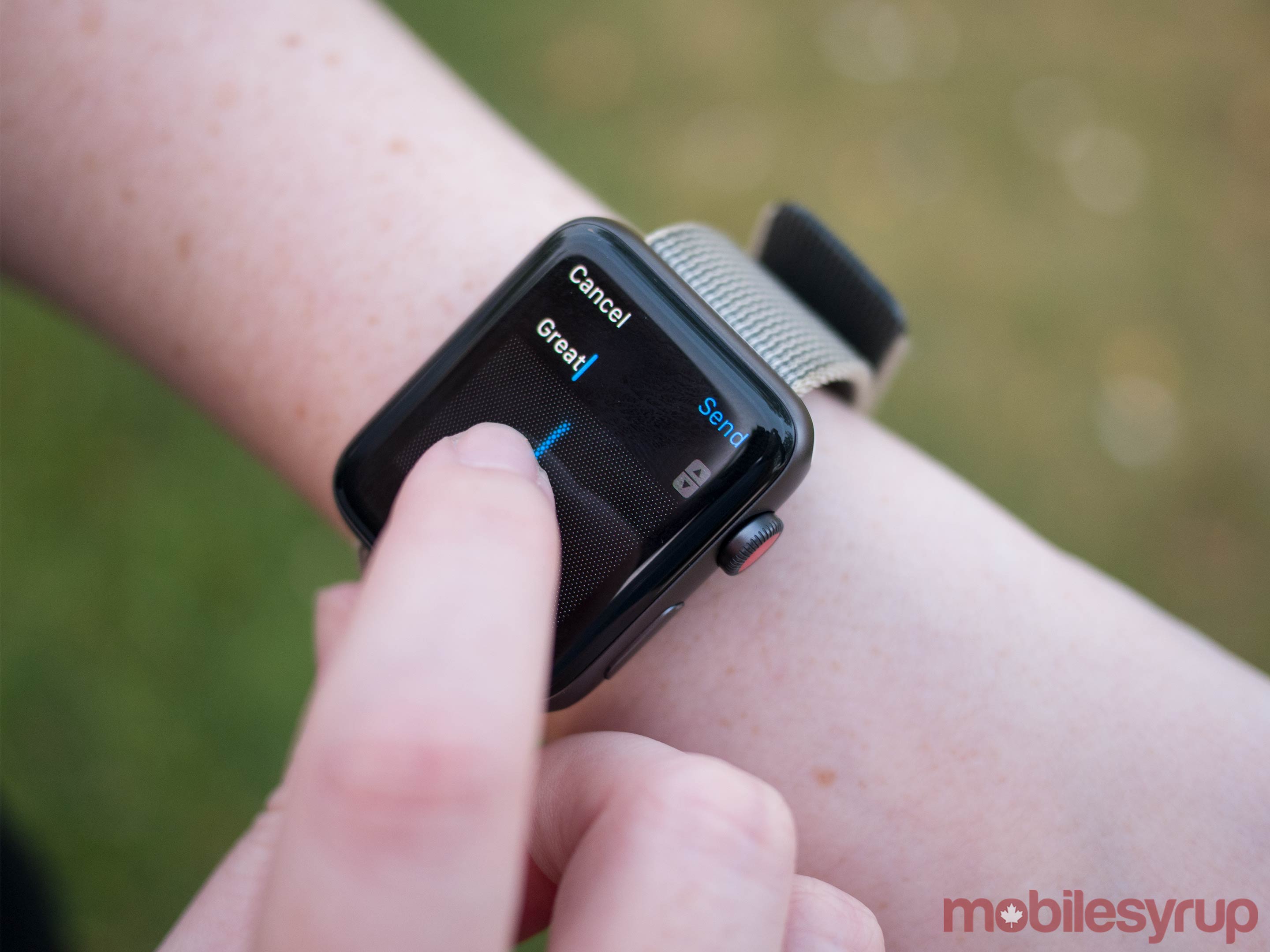
The Series 3 also has one particularly interesting feature on the horizon: the ability to load Apple Music songs to the watch that can then be listened to via Apple’s AirPods — a welcome addition to the phone. Apple also plans to allow users to stream music and radio directly from the Apple Watch via cellular, giving people access to 40 million songs directly on their wrist.
Again, while this particular feature doesn’t appeal to me given I almost always have my iPhone on me, I can see it being a hit with fitness-focused uses. Not only will they be able to receive notifications on the go, but they’ll also soon be able to listen to music too.
Update 10/04/17: Apple has released an update that solves the Apple Watch Series 3 LTE’s connectivity issues.
Update 09/25/17: Bell has confirmed that the Apple Watch Series 3 may experience issues with detecting the longitude and latitude of LTE calls.
Update 09/21/17: While I didn’t encounter significant connectivity issues with the Series 3 in terms of cellular running on Bell’s network, reviewers in the U.S. have. In a statement to TechCrunch, Apple stated the following regarding the Apple Watch Series 3’s connectivity problems.
“We have discovered that when Apple Watch Series 3 joins unauthenticated Wi-Fi networks without connectivity, it may at times prevent the watch from using cellular. We are investigating a fix for a future software release.
Staying the course
If you didn't find the Apple Watch useful before, it's likely that the Series 3 isn't going to change your mind. Cellular connectivity is an interesting novelty, but as it stands right now, not everyone will find it useful. It will be interesting to see if more developers take advantage of the Series 3's independence and if Apple will eventually even allow them to do so.
Those already using a Series 2, which was arguably a bigger leap in processing power over the first Apple Watch than the Series 3 is over the 2, will likely be okay sticking with their current Apple Watch.
If you're still rocking an aging Series 1 though, perhaps the Series 3 is a more worthwhile buy. Also, anyone who feels that celluar is a game changer in terms of how they use the Apple Watch, will certainly find a lot to like about the Series 3.
The LTE-capable Apple Watch Series 3 is available in gold, silver and space grey aluminum, or silver and space black stainless steal, starting at $519 CAD with a September 22nd Canadian launch date at Bell. Telus has not revealed its exact launch date for the Apple Watch Series 3 yet. The non-LTE Apple Watch is priced at $429.
"How much value you'll get out of cellular connectivity with the latest version of the Apple Watch really depends on how you intend to use the wearable."
MobileSyrup may earn a commission from purchases made via our links, which helps fund the journalism we provide free on our website. These links do not influence our editorial content. Support us here.


